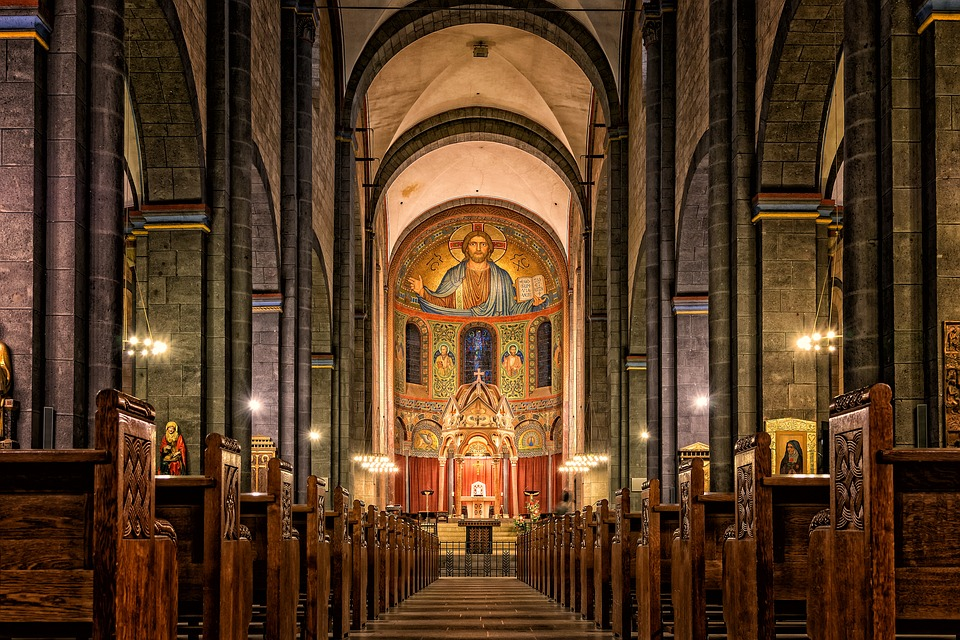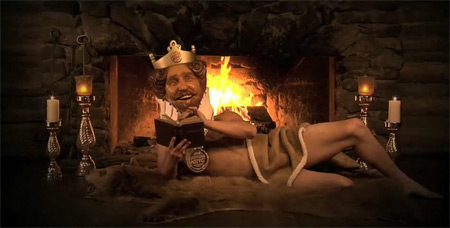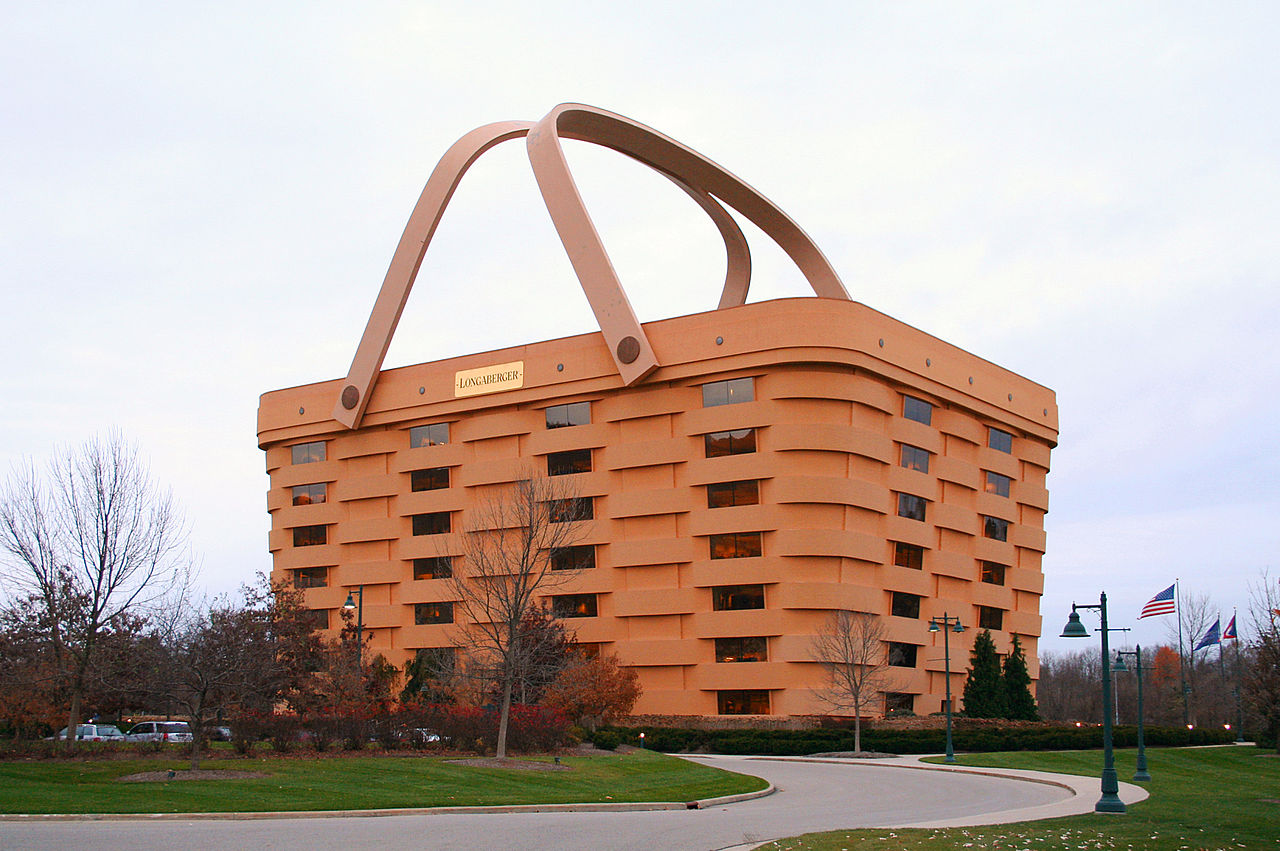There are a lot of soccer stadium disasters in the history of the sport. This is probably due to the fact that football is the most popular sport in the world. Hooliganism may play a small part in some, but we think the problems are mostly because stadiums are old, and they can’t keep up with the increasing amount of spectators. There is usually no orderly or logical setup for efficiently moving people inside them. It’s basically a free-for-all, and if the match is big enough, that could end in tragedy.
Sources for this article include: Wikipedia
Top 15 Worst Soccer Disasters
15. Burnden Park Disaster
Date: 9 March 1946
Location: Burnden Park, Bolton, Manchester, England
Death Toll: 33
At Burnden Park, a game between the Bolton Wanderers and Stoke City was taking place when a wall collapsed, crushing spectators and starting a stampede which killed 33 people. More than 400 others were injured. The crowd was more than 85,000 people. The tragedy was thought to have started when some 20,000 fans locked outside broke down the gates and forced their way in. At the time, this was the biggest tragedy in British football history, until the Ibrox Park disaster at Rangers’ home ground in 1971 (see #8 below).
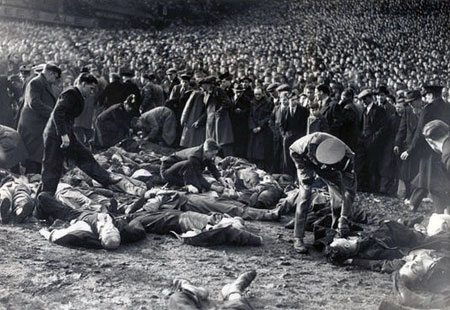
14. The Heysel Disaster
Date: 29 May 1985
Location: Heysel Stadium, Brussels, Belgium
Death Toll: 39
Hooliganism was the trigger for this tragedy among the worst soccer disasters. Back in 1984, when Liverpool F.C. (England) defeated Roma, the Liverpool fans were attacked by the Roma fans. So there was already bad blood between England and Italy when Liverpool faced off against Italy’s Juventus F.C. the following year. As for Heysel Stadium, it was old and outdated. Build in 1930, parts of the stadium were crumbling. But the 1985 European Cup Final was played there anyway, and about 60,000 fans crammed in the place.
About an hour before kickoff, Liverpool fans broke through a fence and attacked Juventus supporters. The Italian fans retreated, but there was a wall behind them, which soon collapsed. The retaining wall collapse killed 39 people and hurting hundreds more.
Juventus fans then started to riot, fighting against police with rocks and bottles. The game was still played despite what was going on, with Juventus eventually winning 1-0.
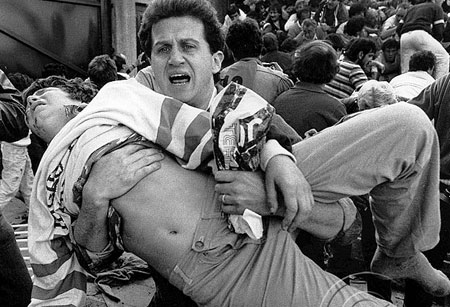
After the disaster, all English football clubs were placed under indefinite ban by the UEFA from all European competitions (lifted in 1990-91). The disaster has been called “the darkest hour in the history of the UEFA competitions.”
In 1995 the Heysel Stadium was demolished and the King Baudouin Stadium built in its place.
Trivia: the disaster was the subject of a song titled “38” by the group Revolting Cocks.
13. Orkney Disaster
Date: 13 January 1991
Location: Oppenheimer Stadium, Orkney, South Africa
Death Toll: 42
South Africa is not immune from some of the worst soccer disasters. In the mining town of Orkney, during a pre-season game between the Kaizer Chiefs (the South African football club, not the British band!) and the Orlando Pirates, (from the township of Orlando in the South African city of Johannesburg, not the Florida town where people go to see Mickey Mouse!), 42 people died in a stampede after a Pirates fan attacked Chiefs supporters in the crowd with a knife. (They called the match a “friendly” – we’d hate to see what an unfriendly game looks like!) Most of the victims were trampled along riot-control fences that surround the field when panic set in and people tried to get away.
12. Ellis Park Stadium Disaster
Date: 11 April 2001
Location: Ellis Park Stadium, Johannesburg, South Africa
Death Toll: 43
The lesson of the Orkney tragedy was not learned. Ten years after that event, on April 11th, 2001, spectators poured into the Ellis Park Stadium for another match between the Kaizer Chiefs and Orlando Pirates. There was already a 60,000 capacity crowd in the stadium, but reports suggest a further 30,000 fans were still trying to gain entry to the stadium. Reports also suggest that 120,000 fans were admitted.
As the crowd surged to gain seats, they spilled into the press boxes. The resulting stampede crushed 43 people to death. Apparently untrained security guards fired tear gas at the crowd, making the situation worse.
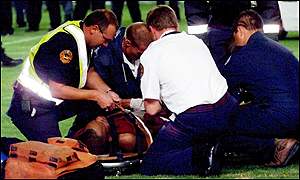
When it became apparent what had happened the match was halted and the crowd was dispersed. It was the worst sporting accident in South African history, beating out the Orkney incident by just one body. Hopefully, these two teams will stop trying to break their records.
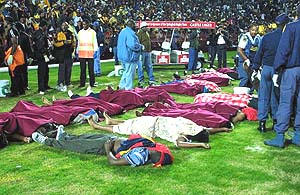
11. Kayseri Ataturk Stadium Tragedy
Date: 17 September 1968
Location: Kayseri Ataturk Stadium, Kayseri, Turkey
Death Toll: 44
The match: Kayseri Erciyesspor Turkish Sports Club vs Sivasspor Turkish sports club. Victims were caught up in rioting following incidents on the field between fans from neighboring Sivas and the home crowd from Kayseri. 44 were killed and 600 injured. Apparently, guns, knives, and other weapons were used.
From Soccer and Disaster: International Perspectives (Sport in the Global Society) by Paul Darby:
The Kayseri vs. Sivas football disaster is perhaps one of the most defining events to affect Turkish society during the late 1960s. Football teams were more than tools in the challenge of the provincial cities to Istanbul’s hegemony. They also contributed to symbolic forms of rivalry between the mid-sized cities, which competed to be regional centres. Conflict was more intense between cities like Kayseri and Sivas. Kayseri was more developed and wealthier than Sivas. Moreover, merchants of Kayseri origin dominated the economy of Sivas. Therefore, while football matches represented for Sivas the idea of challenging the traditional hegemony of Kayseri, for Kayseri it meant resistance to this challenge. Prompted by this strained social and economic background, several fights broke out between the amateur teams of Kayseri and Sivas.
Nearly 21,000 people attended the first league meeting between Kayserispor and Sivasspor. As the level of tension during the match escalated, fans began to throw rocks at each other. A group of people on the Sivas side, seeking to escape from the rocks, rushed toward the field and the exit gates. Those who tried to enter the field were met by police batons and turned back. In a panic, thousands of Sivas fans pressed towards the nearest gates, crushing their fellow supporters against the fencing at the front of the terrace. When the human wave drew back, the scene was horrific: 40 people were dead and at least 300 were injured.
As the violence on the ground grew, the referee cancelled the match. The players of both teams fled into the dressing rooms in fear of their own lives. All of the members of the Sivas team were locked in their dressing room and a policeman was charged with guarding them. Yusuf Ziya Özler, one of the of Sivasspor players, is sure today that if the Kayseri fans had seen that only one policeman was guarding the team, they would have been killed mercilessly. Once the Sivas fans had made their way out on to the streets, they destroyed around 60 private cars and the city’s gymnasium. They then left Kayseri in a convoy, but 50 kilometres out on the Kayseri-Sivas highway they stopped and began to set fire to cars, buses and trucks whose license plate numbers indicated that they were from Kayseri.
Keep Reading – Next Page

